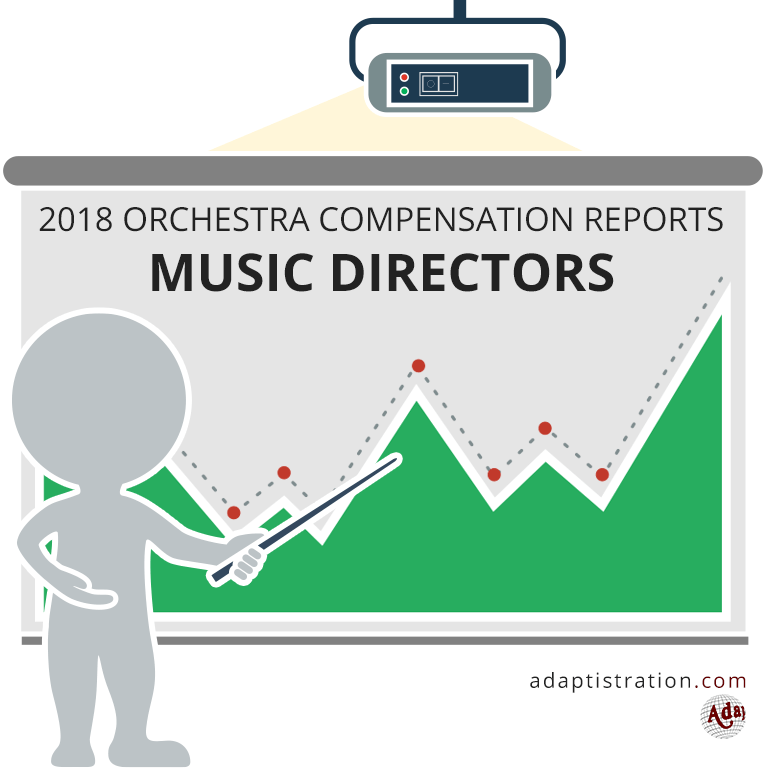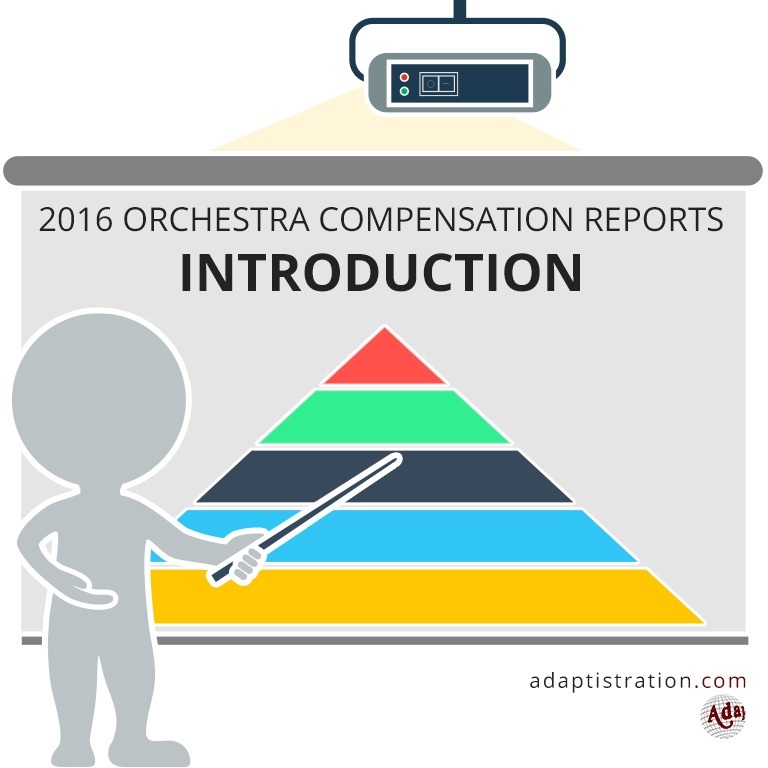If you were a music director during the 2015/16 season, there’s a good chance you enjoyed a sharp uptick in compensation. The 2015/16 season was also the first season the average compensation rate exceeded the $600,000 threshold.
The Information
In order to provide information that is as accurate as possible, info from the 2015/16 season is gathered from the following sources:
- Music Director compensation figures were obtained from their respective orchestra’s IRS Form 990 for the 2015/16 concert season.
- Total Expenditures were also obtained from each respective orchestra’s IRS Form 990 for the 2015/16 concert season.
Adaptistration makes no claim to the accuracy of information from documents compiled or reported by external sources. If you have reason to believe any of the information is inaccurate or has changed since reported in any of the above sources and you can provide documentation to such effect, please feel free to use the following form to submit a notice.
Did you know? Direct links to most of the orchestra’s financial disclosure documents at guidestar.org are available in the Orchestra Financial Reports.
What The Numbers Don’t Show
It is important to remember that the numbers shown do not always convey a complete compensation picture. For example, a music director may have had a large increase in salary because they were leaving a position and per terms of their contract they may have received a sizeable severance or deferred compensation package. As such, the cumulative compensation may artificially inflate annual earnings. Furthermore, these figures may not reflect bonuses or other incentive payments, therefore underreporting what conductors may actually earn.
Also missing from the figures are expense accounts, lodging expenses, and other perks; as such, the cumulative compensation for music directors may or may not be more than what is listed. Additionally, the documents used to gather figures do not indicate how much of the season an individual received a salary. As such, excessive adjustments in the percentage change from the previous season’s compensation may be artificially adjusted. Although the music director compensation figures include the combined amounts reported as what the IRS classifies as Base Compensation, Bonus & Incentive Compensation, Other Reportable Compensation, Retirement And Other Deferred Compensation, and Nontaxable Benefits, each orchestra does not always report figures for the latter categories if paying the music director as an independent contractor.
How Terms Impact Compensation
Unlike executives, concertmasters, and musicians, music directors are sometimes employed as independent contractors. In these cases, orchestras will list the music director among the five highest paid independent contractors as opposed to sections devoted to employee compensation. In most of these instances, no information about benefits or deferred compensation is available.
Likewise, some music directors receive separate payments for duties associated with their position. For example, for several fiscal years the Seattle Symphony Orchestra paid former music director Gerard Schwarz via two separate private contractor listings: once for music director duties and the other for principal conducting duties. At the Chicago Symphony Orchestra, when Daniel Barenboim was with the organization, he was often paid separately for music director services and then again as conductor and soloist.
In instances such as these, those figures have been combined into a single figure in the table below. For details about each individual conductor’s compensation, please consult the respective orchestra’s IRS Form 990.
2015/16 Season Music Director Compensation
Sorry, but this information is only made available for one year until the following season’s reports are published. Copies are available for a fee (feel free to inquire), or you can begin compiling your own database by building a comprehensive library of orchestra 990s, available from the Adaptistration Store.
Top 10 Earners
- Dallas Symphony: $3,642,804
- Chicago Symphony: $3,046,137
- San Francisco Symphony: $2,600,275
- Los Angeles Philharmonic: $1,983,314
- New York Philharmonic: $1,793,837
- Cleveland Orchestra: $1,406,143
- Philadelphia Orchestra: $1,339,333
- Boston Symphony: $1,301,000
- Saint Louis Symphony: $1,041,851
- Pittsburgh Symphony: $918,550

The “Not Reporteds”
This season only produced one Not Reported entry, which occurs when an organization’s 990 that should otherwise include music director compensation, doesn’t.
Initially, there were four orchestras that triggered the Not Reported threshold but two of them responded to requests for more information within minutes of receiving the message, providing compensation figures promptly. The third managed to get information out after some back and forth and right before the article was published.
Van Zweden Continues To Set Anomalous Compensation Records
Once again, Jaap van Zweden tops the list of music director compensation. Moreover, the 2015/16 season figure was nearly $1 million over the previous season. For the sake of clarification, Van Zweden was still music director of the Dallas Symphony Orchestra during the 2015/16 season.
Van Zweden’s compensation started drawing public attention in the wake of the revelation that he was paid $5,110,538 for the 2013/14 season. Since then, the Dallas Symphony paid him more than $11 million in compensation over the course of three seasons.
To gain a sense of perspective, here’s how that compares to the cumulative compensation levels for conductors at orchestras with total expenditure levels more than double that of Dallas:
| ENSEMBLE | 2013/14 | 2014/15 | 2015/16 | TOTAL |
| Dallas Symphony | $5,110,538 | $2,657,139 | $3,642,804 | $11,410,481 |
| Chicago Symphony | $2,309,837 | $2,776,869 | $3,046,137 | $8,132,843 |
| Los Angeles Philharmonic | $1,661,493 | $1,906,100 | $1,983,314 | $5,550,907 |
| New York Philharmonic | $1,751,570 | $1,672,450 | $1,793,837 | $5,217,857 |
| San Francisco Symphony | $2,105,920 | $2,715,815 | $2,600,275 | $7,422,010 |


